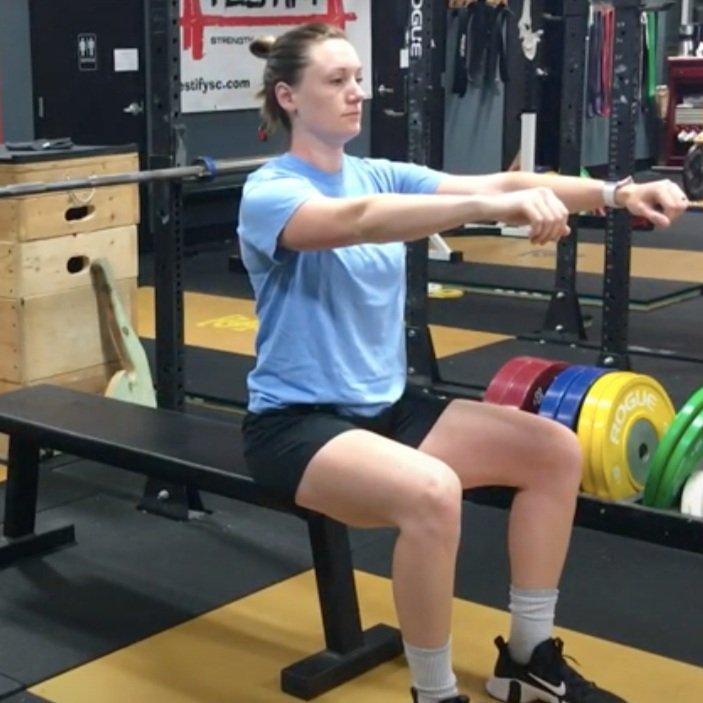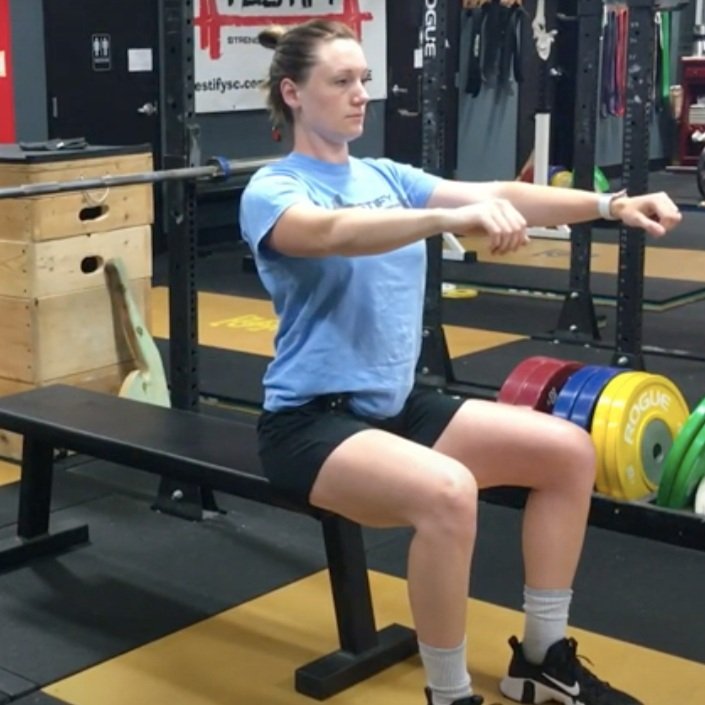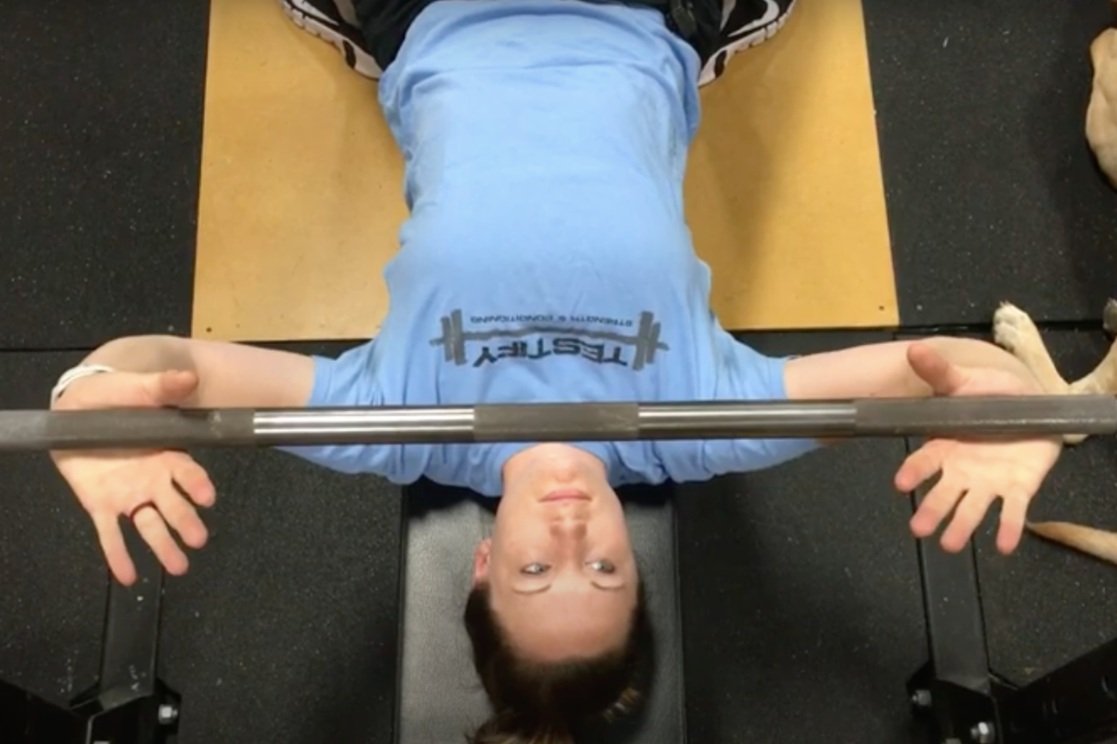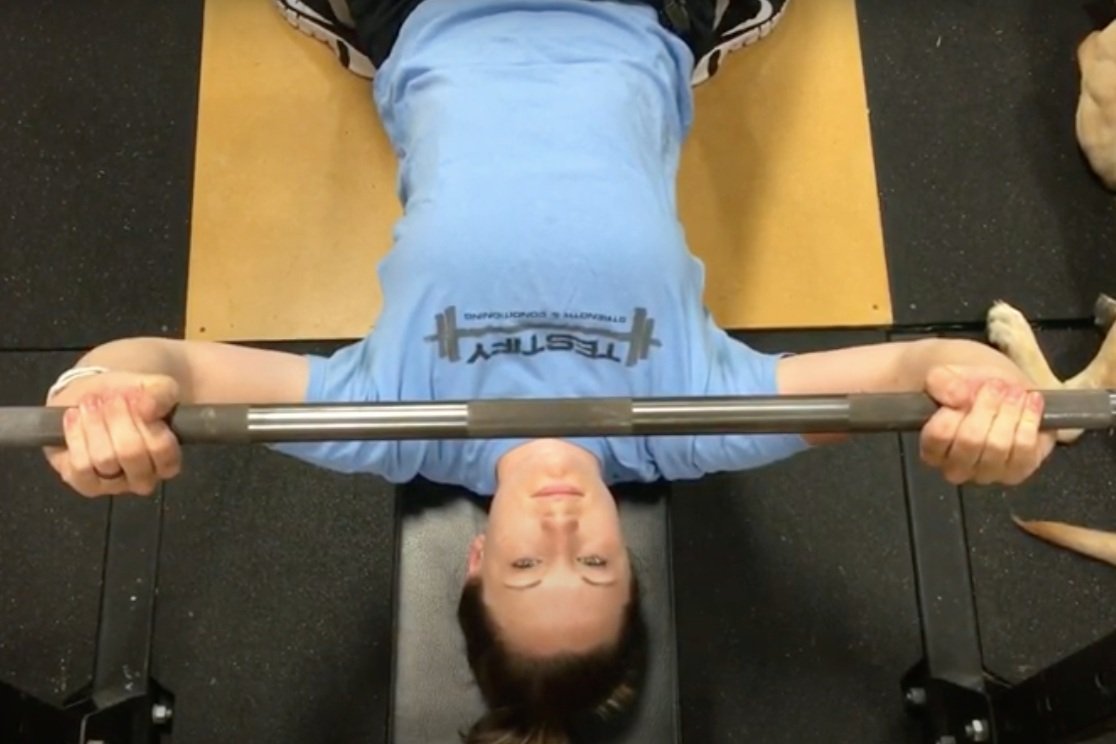How to Safely Bench Press Alone!
/not like this . . . not like this.
Don’t be that guy. Or gal. Just . . . don’t. The bench press is the most dangerous lift we perform in the weight room. It’s the only one wherein - should something go wrong - your face and/or neck could be trapped between something heavy (the bar) and something immovable (the bench). Ideally, you have a spotter when you bench press, but even when alone, you can perform the lift in a perfectly safe manner, so if you don’t want to end up with a barbell on your face, read on.
Equipment
You need a power rack like the one in the included video, or you can use a squat stand with adjustable spotter arms. Your power rack should have safeties (also known as “pins” or “crash bars”). If it doesn’t, throw it out.
Setup Requirement #1
Set the safeties low enough that you can perform the bench press without having the barbell run into them when the bar touches your chest. Your legs are driving you up the bench, your arch is set, your shoulders are pinned back, and in this position, the safeties need to be just low enough that you don’t hit them with the bar.
Setup Requirement #2
The safeties also need to be high enough that - should you fail a rep - you can simply lower the bar back down, relax your body, and allow the bar to sit on the safeties. At this point, you roll the bar out of your way and get out safely from the situation.
In other words, the safeties must be low enough that they don’t cause a problem, and they must be high enough that they save you from any problems.
Test It Out
When you have your safeties set where you think they should be, test your setup. Perform a few reps with the empty bar to make sure the bar doesn’t hit the safeties, and then after that, set the bar down on the safeties (i.e., pretend to fail a rep), and make sure that you can get out from under the bar. It’s an especially good idea to roll the empty bar (when it’s sitting on the safeties) back toward your face to make sure the safeties are high enough to protect your face and neck.
Write It Down
Record the height of your safeties in your training log. If you train at home, you can write numbers on your rack (if it doesn’t already have them) with a permanent marker and then record your pin height in your log. If you train at a commercial gym, find a way to make sure that you set the safeties at the correct height and then write it down.
One Last Thing . . .
Don’t use collars when you bench press. The safeties will protect you, but just in case you forget to set them up, you can simply tip the bar to the side, and the plates will fall off (one side and then the other) in a rather loud and semi-disastrous manner, but you’ll be alive, and that’s the important part. This is not nearly as good of a solution as setting the safeties correctly, but it’s better than nothing.
As always, we hope this helps you get stronger and live better.
-Phil
PS: Whenever you want even more Testify in your life, here are some free resources:
Book a free intro and strategy session with us HERE.
Pick up a free copy of Testify’s Squat Guide: 12 Tips to Improve Your Squat Now HERE.
Get our free weekly email - containing useful videos, articles, and training tips - HERE.
Follow Testify on Instagram HERE.
Subscribe to Testify’s YouTube channel HERE.
(Some links may be affiliate links. As an Amazon Associate, Testify earns from qualifying purchases.)












